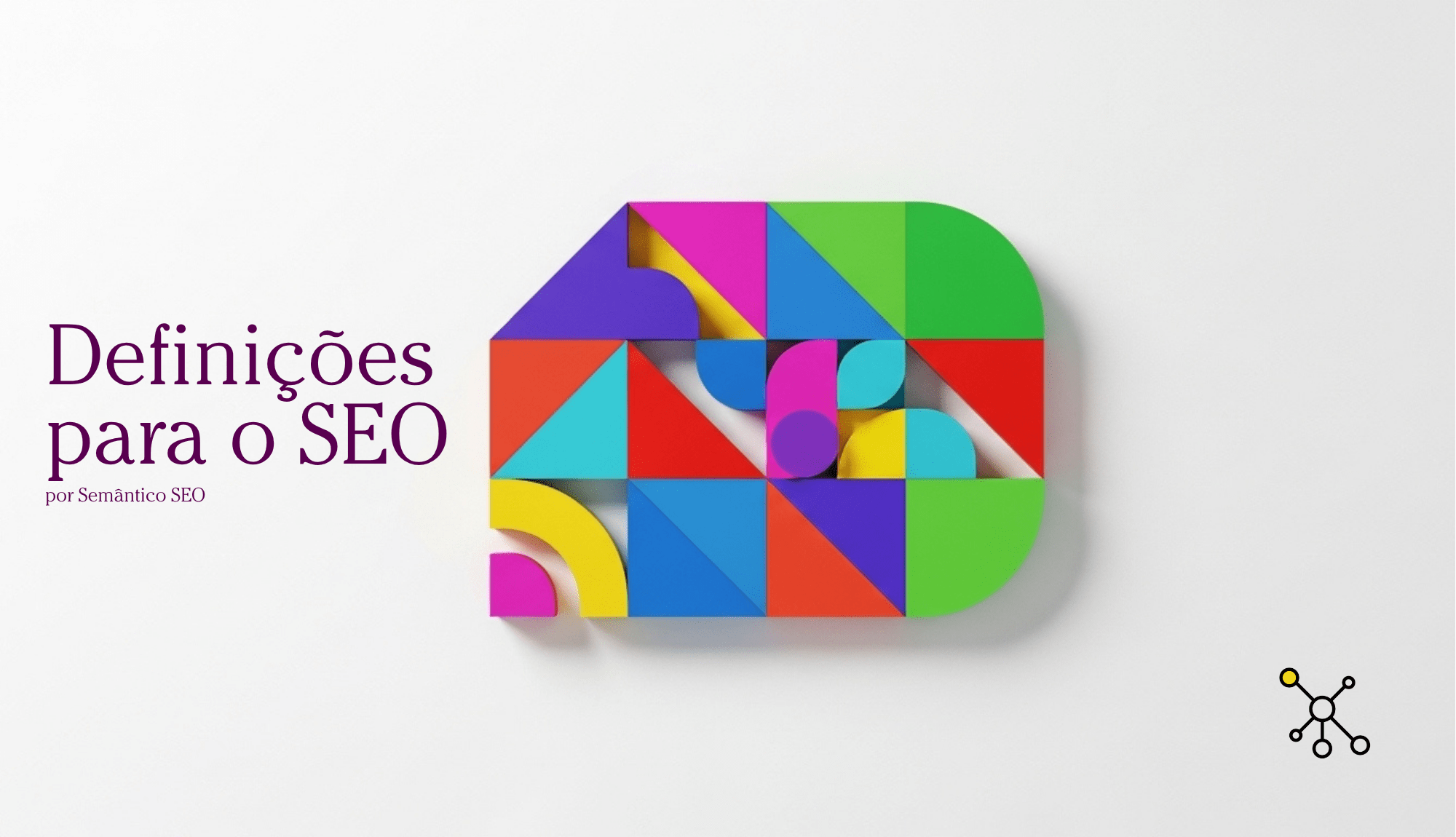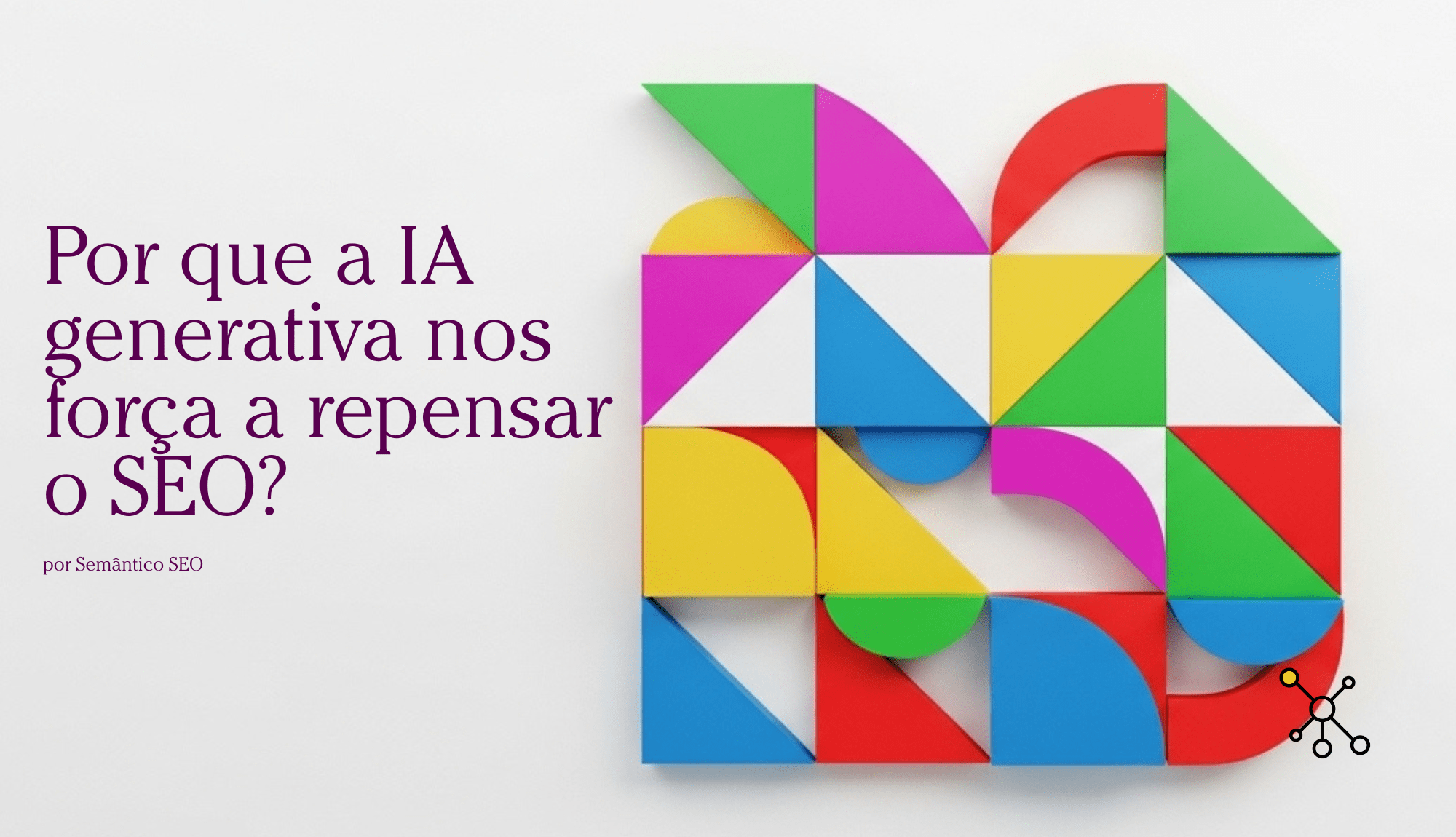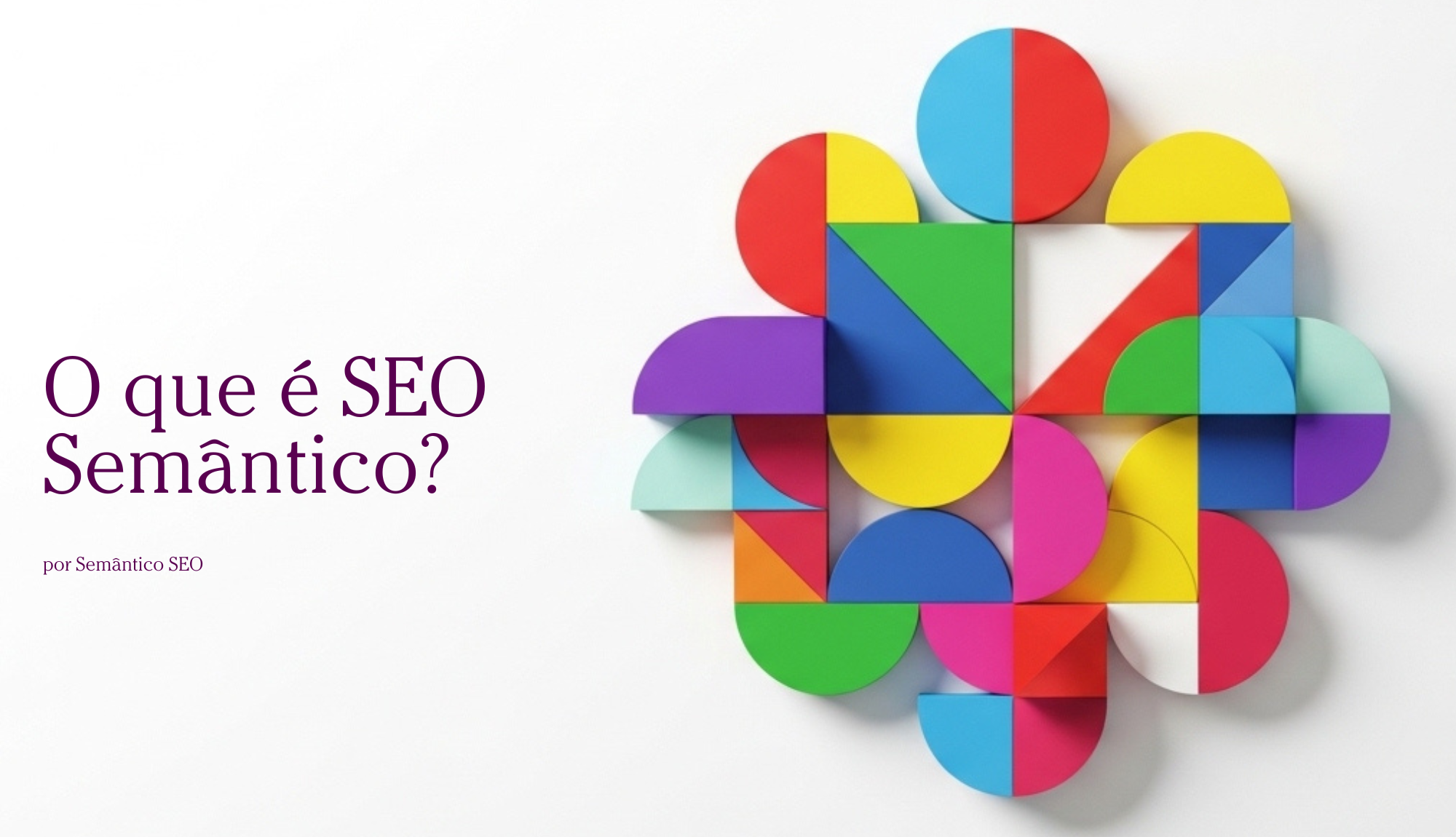Creating definitions for Semantic SEO
Abstract: In this article, I present the methodology for creating definitions widely used in Library Science for the semantic optimization of websites , Semantic SEO , as an important aid in solving one of the biggest problems of search : ambiguity.
Why create better definitions for our entities?
The main problem that automated information retrieval systems (web search engines fall into this category) face is having a high degree of certainty about the information the user wants.
When I ask a question like, "Where can I find a puma?", Google, for example, generates a search like this:

It becomes clear, given my background—that I don't own a car and don't search for them—that the algorithm has more confidence in the entity "puma" being associated with a sports brand, less so with cars, and not at all with the puma animal.
Did you know that I created a Definition Generator Spreadsheet to help you create your own using my custom prompt?
Therefore, what we call disambiguation Information Science
Wikipedia defines disambiguation as follows:
In linguistics , disambiguation refers to the process of explaining a message that has more than one meaning . An ambiguous term is, therefore, one that conveys a confusing message or instruction and can be interpreted in more than one way.
Wikipedia Brazil
I've already written about this here on the blog in the post " The Importance of Disambiguation in Semantic SEO ".
Another example of an optimized result, this time using voice search:

The definition I created, from my perspective on what Semantic SEO is, generated this result.
Marcelo Schiessl and Marisa Brascher, in Ontology: Ambiguity and Precision , state that ambiguity is a major obstacle to information retrieval.
Therefore, any and all help we can give to our algorithmic reader (primarily search engines) helps in this process of escaping uncertainty, making it clearer to the retrieval tools what specific subject we want to know about.
And one of the simplest ways to do this is to deal with precise definitions of the concepts, terms , and entities present in our texts.
Defining entities
The process of defining entities known as terminological definition fits perfectly into our work because it helps us create a text-statement that “accounts for the meanings of terms or expressions of a technique, technology , or science.” 1 , that is, it helps us deal with the specific terms of an area of knowledge that we are dealing with (related to its semantic field) and their meanings.
An entity is anything, concrete or abstract, including associations between entities, abstracted from the real world and modeled in tabular form that will store information in a database . Entities
Wikipedia Brazil
are uniquely identifiable objects and/or people with individual properties (such as color = red, date of birth = August 28, 1749, altitude = 2962 meters, temperature = -4.5 degrees). — ENTITY (COMPUTER SCIENCE )
To define is to use the correct expression of specialized knowledge, or as FINATTO (2022) states:
A body of specialized knowledge. In this case, this statement (another name we can use, in this case, for definition), is also, according to FINATTO (2022), a particular conceptual representation, linked to technical, scientific or technological knowledge.
It was this use of definitions that caught my attention and made me see their importance in creating optimized content, especially for Semantic SEO, which, for obvious reasons, needs to be specific and extremely clear about the entities it is dealing with.
How does definition creation theory help SEO?
To use SEO keyword creation techniques, I chose, in my professional practice, to appropriate the studies of Terminology, after reading this definition:
Terminology is a discipline that allows for the systematic identification of the vocabulary of a given specialty, the analysis of this vocabulary, and, if necessary, its creation and standardization in a specific operational situation to meet the expression needs of users.
DUBUC, 1999, pp. 21–22
One of the most complex tasks when starting a Semantic SEO project is understanding the concepts, and consequently the terms and entities, of the knowledge domain to which the website belongs.
I've done extensive research on the world of customer service, electric cars, solar energy, custom-made paintings, and other related topics. This process of learning about a subject you know nothing about is complex, time-consuming, and offers no guarantee of success.
But when I learned about Terminology, which can be defined as a branch of Linguistics that studies the form and meaning of words that are part of the existing vocabulary in a given language, I understood that I could use its methodologies for my work.
Studying more about the Communicative Theory of Terminology (CTT), which emerged in the 80s and 90s, proposed by Maria Teresa Cabré and collaborators, I understood the possibilities. This new vision on the study of terms is perfect for SEO because of this particular work structure:
TERM > Creation of a set of words by speakers specialized in a particular subject.
Using the vocabulary employed by experts in a given subject helps me solve my research in SEO projects, as it provides a highly qualified starting point of terms, concepts, and entities with which I can build my Semantic Workflow.
The Communicative Theory of Terminology uses a method for creating definitions that fits perfectly with my work, called the Semasiological Method, which starts with words to find their meanings. This allows me to use a set of texts written by experts to create what we call a Corpus, a collection of works of all kinds, written by experts on a particular subject.
A corpus about the world of Harry Potter could be, for example, a Wiki written by fans, researchers, and amateur experts on the books and films.
Furthermore, TCT is concerned with Terminological Variation, something common in any field, because variation occurs all the time, either because specialists update the definition of terms over time or because they use different words to define the same entity.
In medicine, what we know today as Hansen's disease was once called leprosy and Lazarus's disease. Or in studies related to agricultural production, cassava is also called macaxeira, aipim, maniva, castelinha, uaipi, maniveira, pão-de-pobre, etc.
I would like to quote here Professors Dr. Rita do Carmo Ferreira Laipelt and Dr. Regina Helena Van der Laan, when they speak about the importance of Terminology in Indexing:
In this way, understanding what a term is and the existence of terminological variants will enable the indexer to better represent the information. This will allow easier access for different users of an information retrieval system (IRS).
Professor Dr. Rita do Carmo Ferreira Laipelt and Professor Dr. Regina Helena Van der Laan
Creating definitions for Semantic SEO
Therefore, the proposal I bring to our optimization practice is the use of the methodology created by TCT, but first, let's remember the type of statement we will use. For this, I will use the terminological definition that Barros (2004) summarizes, as follows:
The statement that describes the content of a lexical or terminological unit in the entry position of a dictionary entry […] It consists of a synonymous paraphrase that expresses the concept designated by the lexical or terminological unit by means of other linguistic units; it is a set of information that is given about the entry. (pp. 158–9).
Barros (2004)
I want to mention a few points from this definition, which is quite complex, but which are of great interest to us.
First, the vision of describing the semantic and conceptual content of the entities we use in our projects. Whether these entities are used as categories to structure a project, themes for content, or words used in texts, the concern with the meaning we give to them and the concepts involved in their clear definition is, for me, fundamental.
If I'm optimizing a project about electric cars, I first need to know how the industry conceptualizes what an electric vehicle is. Then I can customize that definition with the particular vision of the organization that owns the website. This gives it the necessary personality to differentiate my content from others already created.
The second point is synonymous paraphrasing. Synonymy (synonyms) occurs between pairs of words or expressions, but it's not just a relationship of meanings; for two expressions to be synonymous, it's not enough that they have the same reference in the world. Applying this to Semantic SEO terms, it's not enough that I'm talking about the same entity.
For this relationship to occur, the expressions you use in your content must, in addition to referring to the same entity, have the same meaning. Therefore, they must be semantically objective.
Going back to my example about electric cars. If I'm talking about the new BMW i4, I can use variations in my content to talk about this entity (BMW i4), but the sentences I create need to refer to the same set of facts and both be true.
If I say in one sentence that the i4 is an electric car created by BMW, in another I might say that the launch of the year from the German manufacturer BMW is the first electric Gran Coupé. Both facts are true about the same entity.
Entity definitions
But we won't use every type of definition in SEO; the type of definition that interests us is the one used in terminological dictionaries:
Terminological definitions predominantly provide formal knowledge about "things" or phenomena.
(FINATTO, 1998, p. 2)
The terminological definition has the following characteristics:
- Suitability to the domain;
- Formal structure and conceptual organization of the definitional statement;
- Similar genre + specific differences*
I have written many times here on the Semantic Blog about Domain (knowledge domain, semantic domain). Linguistic Anthropology has one approach, lexicography another, but it is the perspective of the Social Sciences that helps us.
The original aim of the research was to see how the words that groups of humans use to describe certain things relate to the underlying perceptions and meanings that these groups share.
Ethnosemantics became the field that focused on the study of these semantic domains and, more specifically, the study of how the categorization and context of words and groups of words reflected the ways in which different cultures categorize words in discourse and assign meaning to their language.
OTTENHEIMER, 2006, p. 18
Similar genre + specific differences
But before continuing, I need to emphasize the importance of item 3: closely related gender + specific differences. It serves as a guide to begin the process of defining our concepts, terms, and entities. Let's look at an example:
"An electric car is a motor vehicle propelled by electric energy."
In this example, the word "motor vehicle" represents the closest genus, as it is the closest genus (and higher in the hierarchy) to electric car. If we think of a taxonomy of vehicles, we might have something like this:
- Vehicles
- Motor vehicle
- Electric vehicles (or electric cars).
"An electric car is a motor vehicle propelled by electric energy."
The expression "powered by electricity" is the specific difference of an electric car, a unique characteristic of this particular type of car.
And how does this help us?
What is the advantage of using this pattern in creating optimized texts?
Currently, as I learned from Teodora Petkova, we have two audiences for our content:
Algorithms and humans.
I've been using definition creation in my work to address a problem that algorithms need to solve: the ambiguity of our language. To do this, I follow this pattern :
Right at the beginning of the text, I define, without ambiguity, the entities we are working with. Of course, to avoid making the text difficult for humans to read, I can use various strategies to generate these definitions, but in any case, the content begins by clearly defining what I am talking about, at the entity level.
I must remind you that we are building a semantic content layer for the Web, so let's talk briefly about the Semantic Web.
Semantic Web, Structured Data, and SEO
A semantic web needs structured data. Besides creating good definitions, using structured data on your website will further benefit your algorithmic audience. We know that research in the field of semantics, adapted to web technologies, has advanced in resolving ambiguity, but this is still a work in progress.
Search engines like Google and Bing use technology to solve this problem. Imagine if your content helped search engines resolve the ambiguity of searches related to your area of expertise?
My proposal is to use the methodology of the Communicative Theory of Terminology to create formal definitions for your concepts, terms, and entities. These definitions can, and should, be stored in your taxonomy (or you can create a Thesaurus for your content), making this documentation useful for everyone who creates content in your organization.
In summary, the proposal is:
Formal Definitions
Start the descriptions with formal definitions of the entities because this helps the algorithm understand what we are talking about.
Standardization
A consistent pattern for creating texts for entities and categories doesn't mean uncreative texts, but it helps us stay within our semantic field.
References
- FINATTO, MJB. The role of defining technical-scientific terms. lume.ufrgs.br, 2002. Available at http://hdl.handle.net/10183/184253. Accessed on: February 4, 2023.
- RODRIGUES, Daniel de Sá. Terminological definition: principles and rules. periodicos.ufpa.br, 2020. Moara Journal, no. 55, Jan-Jul 2020. Available at http://dx.doi.org/10.18542/moara.v0i55.9040. Accessed on: February 4, 2023.




